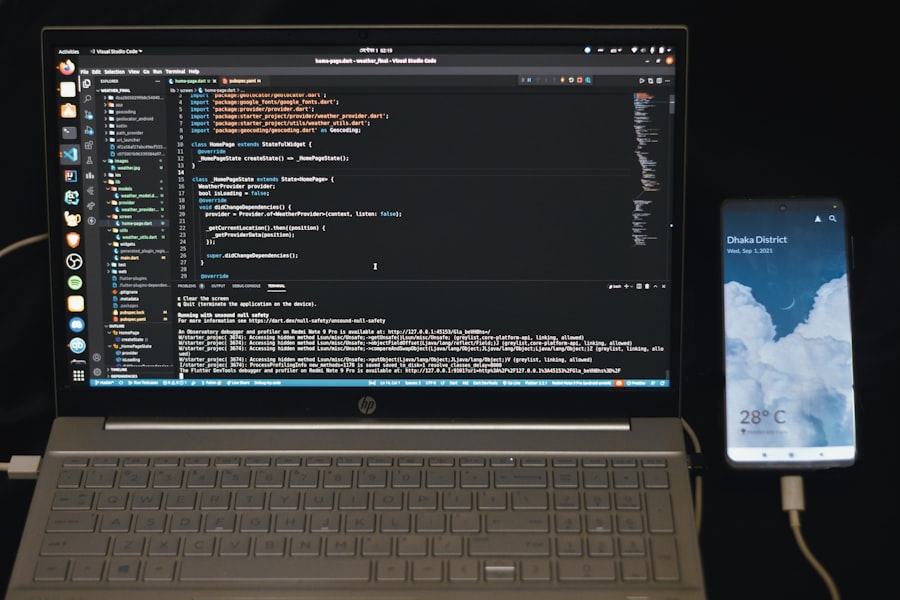The Venona Project stands as a pivotal chapter in the annals of American intelligence history, representing a concerted effort to decode Soviet espionage activities during the height of the Cold War. Initiated in the early 1940s, this secret program aimed to intercept and decrypt messages sent by Soviet intelligence agencies, particularly the KGB and GRU. The significance of the Venona Project cannot be overstated; it not only provided crucial insights into Soviet operations but also laid bare the extent of espionage activities that permeated American society and government.
As the United States grappled with the threat of communism, the revelations from Venona would shape national security policies and public perception for decades to come. The project was born out of necessity, as World War II had heightened tensions between the United States and the Soviet Union.
Thus, the Venona Project emerged as a clandestine initiative, employing cryptographers and linguists to sift through intercepted communications. The work was painstaking and fraught with challenges, yet it ultimately yielded a wealth of information that would prove instrumental in countering Soviet espionage efforts.
Key Takeaways
- The Venona Project was a secret U.S. effort to decrypt and analyze Soviet communications during the Cold War.
- Soviet espionage had its roots in the early 20th century and was driven by the desire to gather intelligence and influence global events.
- The Venona Project played a crucial role in uncovering Soviet espionage activities and identifying Soviet spies operating in the United States.
- Deciphering Soviet codes presented significant challenges due to the complexity of the encryption methods and the vast volume of intercepted messages.
- Key figures in the Venona Project, such as Meredith Gardner and Gene Grabeel, made significant contributions to the project’s success and the uncovering of Soviet espionage activities.
The Origins of Soviet Espionage
Soviet espionage has deep roots that trace back to the early years of the Bolshevik Revolution in 1917. The newly established Soviet regime recognized the importance of intelligence gathering as a means to secure its power and promote its ideological agenda. The Cheka, the Soviet secret police, was among the first organizations tasked with espionage activities, laying the groundwork for what would evolve into a sophisticated network of spies and informants.
This early focus on intelligence gathering was driven by a combination of paranoia about foreign intervention and a desire to spread communist ideology globally. As the years progressed, Soviet espionage expanded significantly, particularly during World War
The USSR sought to infiltrate various governments and military organizations, aiming to gather intelligence that could provide strategic advantages. The establishment of organizations like the NKVD (People’s Commissariat for Internal Affairs) further institutionalized espionage efforts, creating a framework for recruiting agents and conducting covert operations. This period marked a significant escalation in Soviet intelligence activities, setting the stage for the extensive espionage campaigns that would unfold during the Cold War.

The Role of the Venona Project in Uncovering Soviet Espionage
| Key Metrics | Details |
|---|---|
| Number of Decrypted Messages | Over 3,000 Soviet intelligence messages decrypted |
| Duration | Operated from 1943 to 1980 |
| Impact | Exposed numerous Soviet spies and agents in the US |
| Revelations | Confirmed the extent of Soviet espionage activities during the Cold War |
The Venona Project played a crucial role in illuminating the shadowy world of Soviet espionage, providing concrete evidence of infiltration within American institutions. By decrypting thousands of messages exchanged between Soviet operatives, American intelligence officials were able to identify key figures involved in espionage activities. This included notable individuals such as Julius and Ethel Rosenberg, whose involvement in passing atomic secrets to the Soviets would later become a focal point of Cold War tensions.
The revelations from Venona not only confirmed suspicions but also provided a clearer picture of the extent to which Soviet agents had penetrated American society. Moreover, the insights gained from the Venona Project had far-reaching implications for U.S. foreign policy and national security strategies.
As decrypted messages revealed the identities of spies and their networks, American officials were better equipped to counteract these threats.
The information gleaned from Venona became a cornerstone for understanding Soviet intentions and capabilities during a time when paranoia about communism was rampant.
The Challenges of Deciphering Soviet Codes
Deciphering Soviet codes presented formidable challenges that tested the limits of American cryptographic capabilities. The complexity of the encryption methods employed by Soviet intelligence made it difficult for even the most skilled cryptographers to make headway. The Soviets utilized various techniques, including one-time pads and complex ciphers, which rendered many messages nearly impossible to decode without specific keys.
This level of sophistication meant that American intelligence operatives often faced significant hurdles in their efforts to uncover vital information. Additionally, the sheer volume of intercepted communications posed another challenge. Thousands of messages were captured during the course of the Venona Project, creating an overwhelming amount of data for analysts to sift through.
Each message required meticulous examination and contextual understanding, as cryptographers needed to piece together fragmented information to form coherent narratives about Soviet operations. Despite these obstacles, the dedication and ingenuity of those involved in the project ultimately led to breakthroughs that would prove invaluable in understanding Soviet espionage.
Key Figures in the Venona Project

The success of the Venona Project can be attributed in large part to several key figures who played instrumental roles in its execution. Among them was William Friedman, a renowned cryptographer whose expertise laid the foundation for much of the project’s work. Friedman’s innovative approaches to cryptography allowed his team to tackle some of the most challenging codes used by Soviet operatives.
His leadership and vision were critical in guiding efforts to decode messages that would later reveal significant intelligence about Soviet espionage activities. Another notable figure was Elizabeth Friedman, who worked alongside her husband William and made substantial contributions to the project. As a skilled cryptanalyst, she played a vital role in deciphering messages and analyzing their implications for U.S.
national security. Together, this husband-and-wife team exemplified the dedication and intellectual rigor that characterized those involved in the Venona Project. Their efforts not only advanced cryptographic techniques but also underscored the importance of collaboration in tackling complex intelligence challenges.
The Impact of the Venona Project on Cold War History
The revelations from the Venona Project had profound implications for Cold War history, shaping both public perception and government policy regarding communism and espionage. As decrypted messages began to surface, they fueled fears about Soviet infiltration within American institutions, leading to heightened scrutiny of suspected communists and leftist sympathizers. This atmosphere of suspicion contributed to events such as McCarthyism, where accusations often lacked substantial evidence but nonetheless had devastating consequences for many individuals’ lives and careers.
Furthermore, the insights gained from Venona influenced U.S. foreign policy decisions during this tumultuous period. Armed with knowledge about Soviet espionage activities, American leaders were better positioned to formulate strategies aimed at countering perceived threats.
The project underscored the necessity for robust intelligence operations and fostered an environment where national security became a paramount concern. In this way, Venona not only illuminated past espionage efforts but also shaped future approaches to intelligence gathering and counterintelligence operations.
Declassification and Public Awareness of the Venona Project
The declassification of information related to the Venona Project marked a significant turning point in public awareness regarding Soviet espionage activities. In 1995, after decades of secrecy, U.S. officials released previously classified documents that detailed aspects of the project’s findings.
This disclosure allowed historians, researchers, and the general public to gain insight into the extent of Soviet infiltration during the Cold War era. The release of these documents sparked renewed interest in espionage history and prompted discussions about its implications for contemporary society. As more information became available, scholars began to analyze how Venona’s findings aligned with or contradicted existing narratives about communism and espionage in America.
This reevaluation led to a more nuanced understanding of historical events and highlighted the complexities surrounding issues such as loyalty, betrayal, and national security during a time marked by fear and suspicion. The declassification process not only shed light on past events but also encouraged ongoing dialogue about intelligence operations and their impact on civil liberties.
Controversies Surrounding the Venona Project
Despite its contributions to understanding Soviet espionage, the Venona Project has not been without controversy. Critics have raised concerns about how its findings were used during periods of heightened anti-communist sentiment, particularly during McCarthyism. Many individuals accused of being communists or spies faced severe repercussions based on limited or circumstantial evidence derived from decrypted messages.
This has led to debates about whether intelligence should be used as a tool for political persecution rather than genuine national security concerns. Additionally, some historians argue that while Venona provided valuable insights into Soviet espionage activities, it may have also contributed to an exaggerated perception of communist threats within American society. The project’s findings were sometimes interpreted through a lens of paranoia that fueled fear-mongering campaigns against perceived leftist elements in various sectors, including government, academia, and labor unions.
This raises important questions about how intelligence can be responsibly utilized without infringing upon civil liberties or fostering an atmosphere of fear.
Lessons Learned from the Venona Project
The lessons gleaned from the Venona Project extend beyond its immediate historical context; they offer valuable insights into contemporary intelligence operations and national security strategies. One key takeaway is the importance of vigilance against espionage threats in an increasingly interconnected world. As globalization continues to blur national boundaries, understanding potential vulnerabilities becomes paramount for governments seeking to protect sensitive information from foreign adversaries.
Moreover, Venona underscores the necessity for robust cryptographic capabilities in modern intelligence operations. As technology evolves, so too do methods employed by adversaries seeking to compromise national security. Investing in advanced cryptography and fostering collaboration among intelligence agencies can enhance capabilities in countering sophisticated threats posed by state-sponsored actors or non-state entities alike.
The Legacy of the Venona Project
The legacy of the Venona Project endures as a testament to human ingenuity in deciphering complex codes and uncovering hidden truths about espionage activities during one of history’s most fraught periods. Its impact on American intelligence practices continues to resonate today; lessons learned from its successes and challenges inform contemporary approaches to counterintelligence operations worldwide. Furthermore, Venona serves as a reminder that vigilance is essential in safeguarding national security while balancing civil liberties.
In addition to its practical implications for intelligence operations, Venona has also left an indelible mark on popular culture and historical discourse surrounding espionage during the Cold War era. Books, films, and documentaries have explored its findings and their ramifications on society at large—fostering ongoing interest in understanding how intelligence shapes geopolitical dynamics.
The Relevance of the Venona Project in Modern Espionage and Intelligence Operations
In an age characterized by rapid technological advancements and evolving geopolitical landscapes, the relevance of the Venona Project remains pronounced within modern espionage and intelligence operations. As nation-states grapple with increasingly sophisticated cyber threats and disinformation campaigns, lessons from Venona can inform strategies aimed at countering these challenges effectively. Moreover, as global tensions rise between major powers—particularly between nations like Russia and China—the need for robust intelligence capabilities becomes ever more critical.
Understanding historical precedents set by projects like Venona can guide contemporary policymakers in navigating complex international relations while safeguarding national interests against potential adversaries seeking to exploit vulnerabilities within democratic systems. In conclusion, while rooted firmly in its historical context, the legacy of the Venona Project continues to resonate today—serving as both a cautionary tale about unchecked paranoia surrounding espionage threats while simultaneously highlighting humanity’s capacity for resilience through innovation in intelligence gathering techniques amidst adversity.
The Venona project was a significant effort by the United States to decrypt messages sent by Soviet intelligence agencies during and after World War II. This top-secret collaboration between the U.S. and the U.K. provided crucial insights into Soviet espionage activities. For those interested in exploring more about the intricacies of code-breaking and intelligence during this era, an article on In The War Room delves into the broader context of wartime intelligence operations, offering a fascinating look at the strategies and technologies that shaped the outcomes of global conflicts.
WATCH THIS 🤯How the KGB Stole America’s Future
FAQs
What was the Venona project?
The Venona project was a secret U.S. code-breaking program during the Cold War, aimed at decrypting and analyzing messages sent by Soviet intelligence agencies.
When did the Venona project take place?
The Venona project was active from 1943 to 1980, with the majority of the code-breaking work taking place in the late 1940s and early 1950s.
What was the significance of the Venona project?
The Venona project played a crucial role in uncovering Soviet espionage activities in the United States and other Western countries. It provided valuable intelligence on Soviet agents and their activities during the Cold War.
How did the Venona project work?
The Venona project involved intercepting and decrypting encrypted Soviet messages, which were transmitted using one-time pads. Codebreakers used various techniques, including statistical analysis and pattern recognition, to decipher the messages.
What were some of the key findings of the Venona project?
The Venona project revealed the identities of numerous Soviet spies and agents operating in the United States, including individuals within the U.S. government and military. It also exposed the extent of Soviet espionage activities during the Cold War.
Was the Venona project declassified?
Yes, the Venona project was declassified in 1995, and the decrypted messages were made public. This provided historians and researchers with valuable insights into the extent of Soviet espionage activities during the Cold War.




